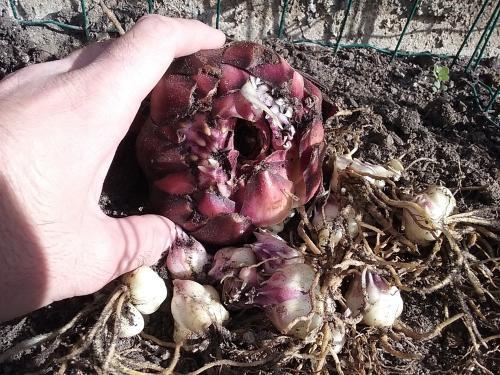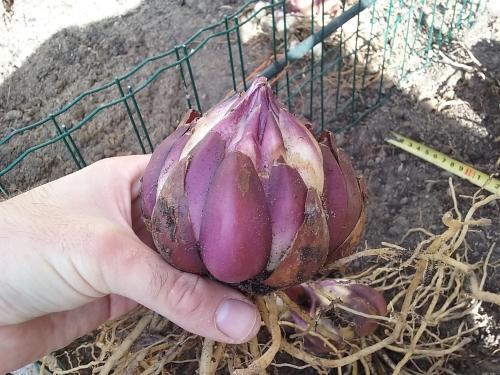Arturo, there was quite a bit of discussion regarding Fusion on a thread from last year:
https://garden.org/thread/go/1.... I have a few seedlings growing from the Fusion x pardalinum cross I made in the summer of 2020. At that time crosses the other way (pardalinum x Fusion, i.e. using Fusion pollen) were always unsuccessful. This year I didn't make further crosses of 'Fusion' x pardalinum but concentrated on using pollen from yellow and apricot-colored Western American Hybrids (WAH). I did this in an attempt to get some lighter colors into the cross. I made several protected crosses and while some pods never set seed I did end up with several with a small number of normal seeds with viable embryos and then a number of questionable seeds and lots of chaff. I understand that Holger Kuehne in Germany has also made crosses from his WAHs onto Fusion with the same mixed success this year too.
This summer I also attempted protected crosses of yellow/apricot WAH x Fusion as I am still unsure whether Fusion pollen is sterile or not. WAH sibling crosses of yellow/apricot WAH were very successful with large, full pods with a large number of viable seeds. In contrast, the pods of yellow/apricot WAH x Fusion were less-well developed and often 'lumpy', with a few seeds with good embryos and lots of chaff. So this makes me think that Fusion pollen is potentially viable. I have a slight nagging doubt as to whether some WAH sibling pollen may have got onto the stigma before applying the Fusion pollen and covering it with its tinfoil cap. I realize, though, that if there was some mixing of pollen then this might be what is needed for Fusion pollen to set seed? It was also unusually warm and dry this summer and this may have played a part in the apparent success of the yellow/apricot WAH x Fusion cross. I have planted the seeds and I'm interested to see what will come of these. I expect the seeds to germinate in a IH manner, but it could well be spring of next year before any leaves are produced.
Regarding germination of Western American Hybrids, I have been successful in planting these in small pots or flats in September/October and keeping these in a frost-free greenhouse until late-December (roughly 8-10 weeks at temperatures of say between 60sF on sunny days and 40sF on cool days/nights, 16C to 4C). I then put the pots outside in a cold frame to protect from rain for another 8-10 weeks for January and February. My winter temperatures are typically 50F-30F / 10C to -1C, with some days slightly warmer and some nights slightly colder. In March I will bring the pots back into the greenhouse and this is when I will see growth start above ground. This method has worked for me with the WAH I have. However, I have been unsuccessful with canadense using this method as I think it doesn't get cold enough and the seeds rot over the winter. I have somewhat mixed success with martagons, and also L. columbianum native to Washington State, too for what I believe to be the same reason. I should add that I use a mix of regular store-bought potting soil (about 70%) into which I mix ground pumice and sand (15% of each), though as I measure this out by the handful I must say that I am not fastidious about the precise concentrations. The main thing I strive for is very good drainage to prevent rot.
I hope this explanation has helped! I continue to be interested in Fusion and potential crosses as I think this will increase the ease of growing WAHs more widely in other areas. The challenge will be to see whether lighter pinks or yellow/apricot colors can be bred into the Fusion line. It will be a few years still before my seedlings with Fusion will come into flower. Although Fusion has been around for a few years now I am not aware of any early crosses made that are flowering already, so this could be an interesting avenue of hybridization to pursue. All the best. Steve



